
cd_nom
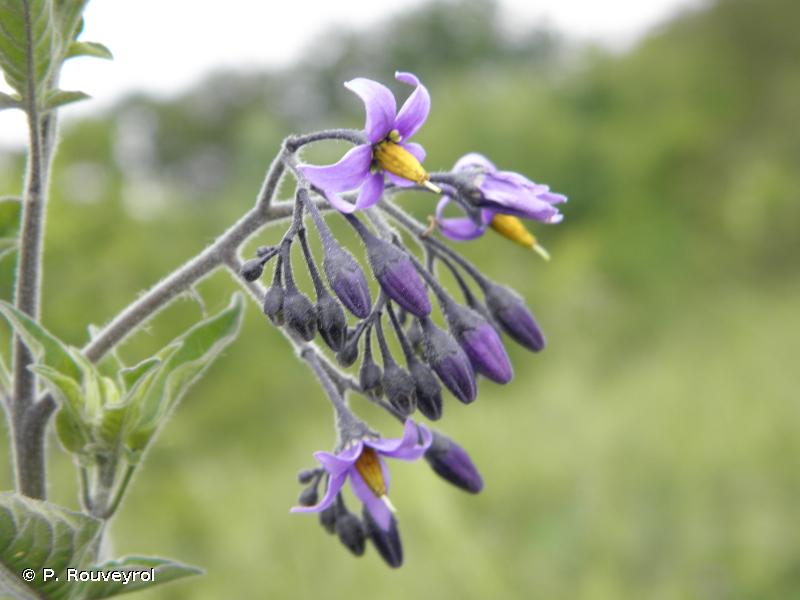
| Author : P. Rouveyrol |
 |
To get the picture, please visit:
Paul Rouveyrol
Chef de projets Espaces naturels
Muséum national d'Histoire naturelle
Service du Patrimoine Naturel
CP41, 36 rue Geoffroy Saint-Hilaire 75005 Paris
Tél : 33(0)1 40 79 57 92
Despite the Creative Commons license, please inform the author of the use which will be made of his photo

| Author : C. Delnatte |
 |
To get the picture, please visit:
César DELNATTE
Chargé de mission écologie végétale
DEAL Martinique
Pointe de Jaham – BP 7212
97274 Schoelcher Cedex
Tél : 05 96 59 58 55
GSM : 06 94 15 63 67
Any reuse of one or more photographs on this site is subject to an authorization request from the author.
Link to the Code of Intellectual Property (Legifrance)
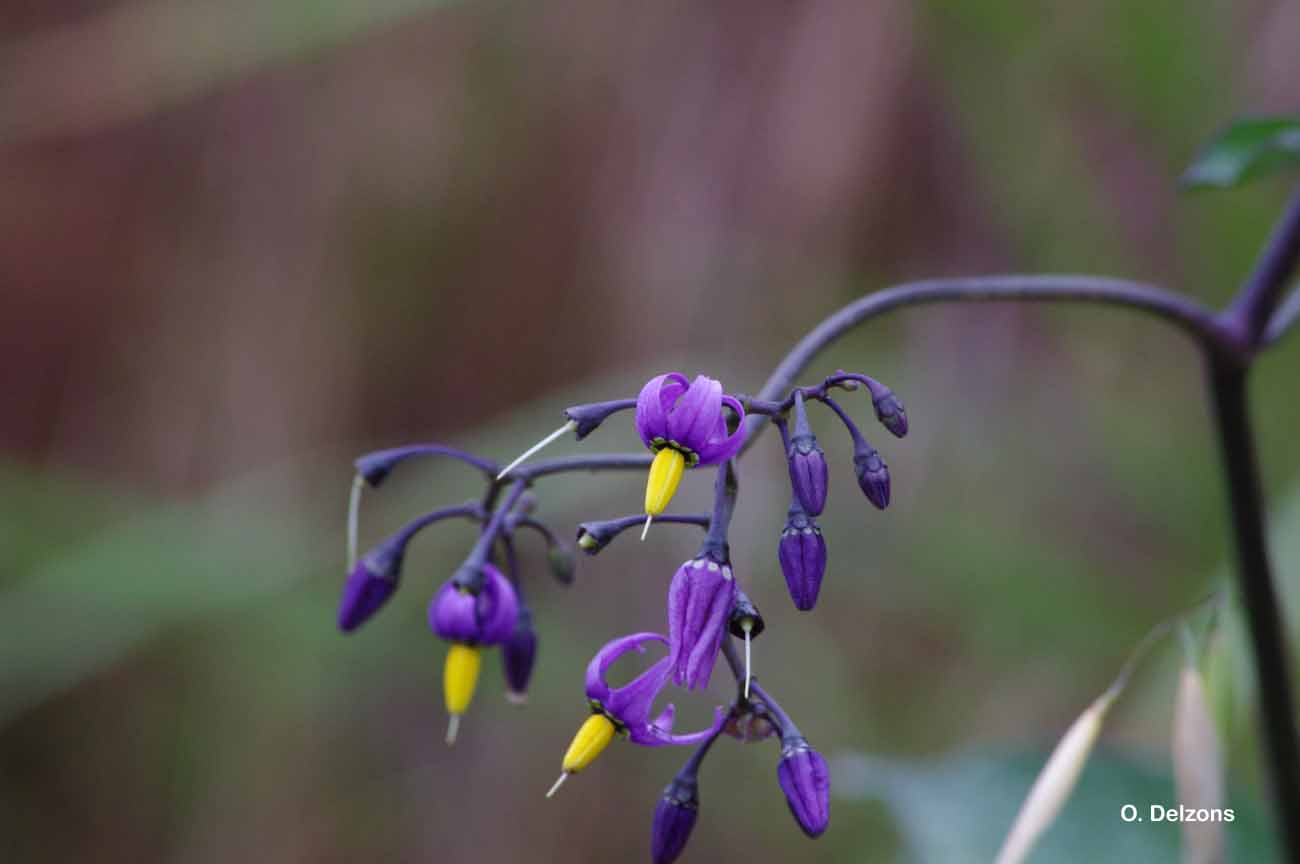
| Author : O. Delzons |
 |
To get the picture, please visit:
Olivier DELZONS
Muséum national d'Histoire naturelle - Service du Patrimoine Naturel
36 rue Geoffroy Saint-Hilaire
CP 41
75 231 PARIS CEDEX 05
e-mail : delzons@mnhn.fr
Despite the Creative Commons license, please inform the author of the use which will be made of his photo
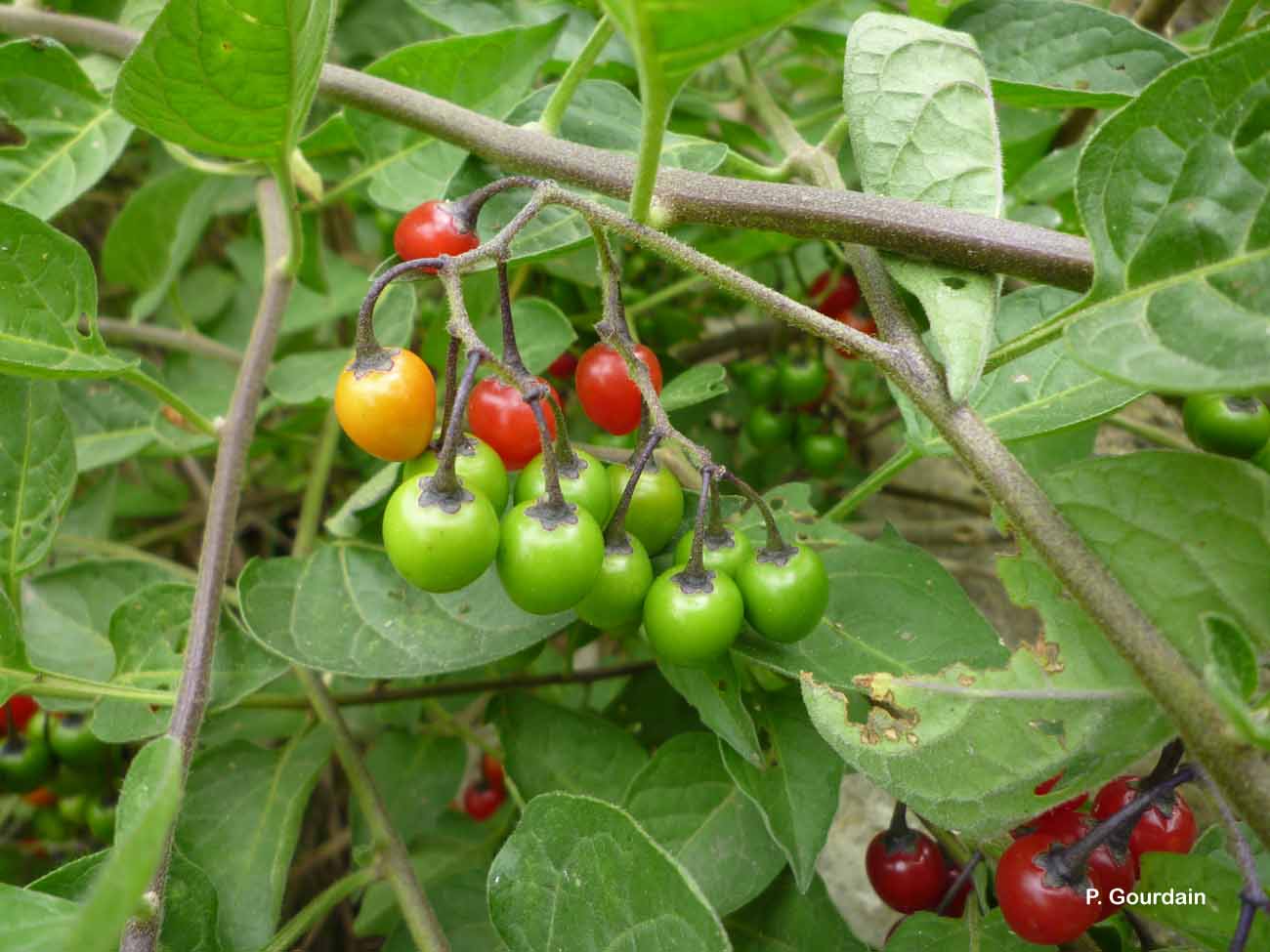
| Author : P. Gourdain |
 |
To get the picture, please visit:
Philippe GOURDAIN
Muséum national d'Histoire naturelle - Service du Patrimoine Naturel
36 rue Geoffroy Saint-Hilaire
CP 41
75 231 PARIS CEDEX 05
e-mail : inpn@mnhn.fr
Legend: Villeneuve-sur-Verberie
Despite the Creative Commons license, please inform the author of the use which will be made of his photo
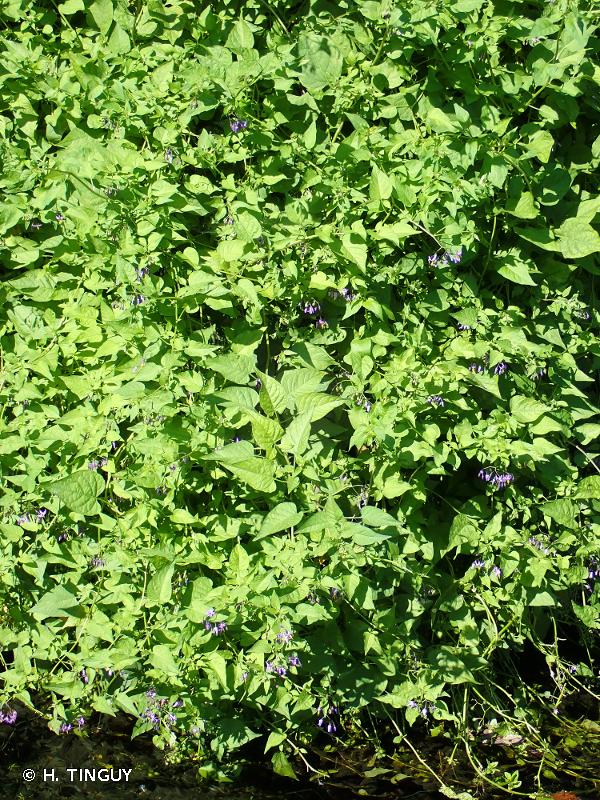
| Author : H. TINGUY |
 |
To get the picture, please visit:
Hugues Tinguy
email : inpn@mnhn.fr
Despite the Creative Commons license, please inform the author of the use which will be made of his photo
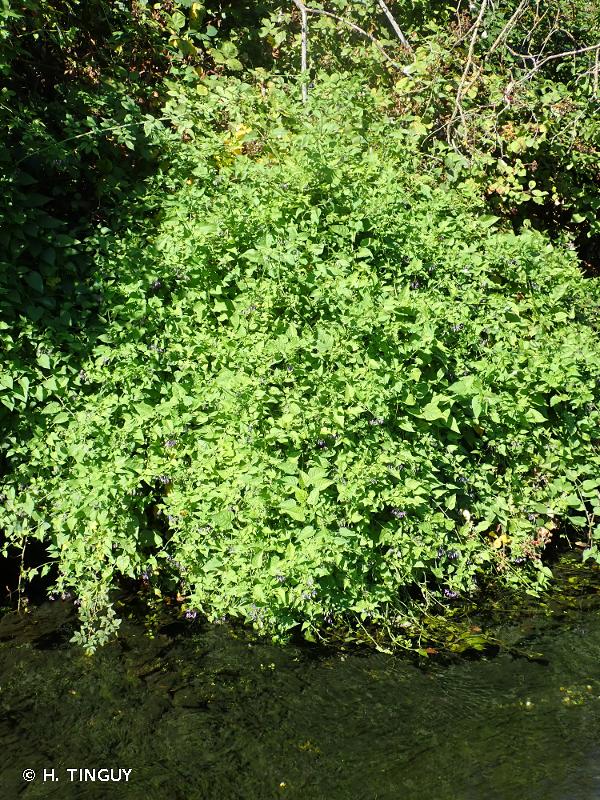
| Author : H. TINGUY |
 |
To get the picture, please visit:
Hugues Tinguy
email : inpn@mnhn.fr
Despite the Creative Commons license, please inform the author of the use which will be made of his photo
Diagnose :
La Douce-amère ou Morelle Douce-amère est une espèce de la famille des Solanacées, herbacée, vivace, à tiges sarmenteuses, grimpantes ou rampantes pouvant atteindre 2 m de hauteur ou longueur. Les feuilles sont alternes, couleur vert foncé, ovales elliptiques, pointues sur leurs parties terminales, avec souvent la présence de deux lobes de petite dimension directement rattachés au pétiole. Les fleurs sont disposées en cymes étalées. Elles possèdent un calice à cinq petits sépales verts, cinq pétales étalés de couleur violacé et cinq étamines à anthères très rapprochées en pointe pyramidale. La floraison se déroule du milieu du printemps à la fin de l'été. Les fruits sont des baies ovoïdes, de couleur rouge brillant à maturité.
Détermination :
La Douce-amère est facile à déterminer. C'est la seule espèce de morelles à posséder des tiges sarmenteuses, des feuilles ovales elliptiques avec deux lobes basaux et des pétales violacés.
Biogéographique et écologie :
En France métropolitaine, cette espèce est commune dans toutes les régions. Son habitat privilégié correspond aux milieux rudéraux, les friches, les décombres, les haies, lisières et orées forestières, ainsi que dans les zones non entretenues et les bords de cours d'eau.
D'après : Coste, H. 1900-1906. Flore descriptive et illustrée de la France, de la Corse et des contrées limitrophes. Paul-Klincksieck, Paris. Réédité en trois tomes en 1998. Librairie scientifique et technique Albert Blanchard, Paris.
O. Escuder(UMS 2006 Patrimoine Naturel (AFB / CNRS / MNHN)),2016
Continental
Metropolitan France
Overseas
Marine
Metropolitan France
Overseas
The map presents a summary at the 10 x 10 km grid of the observation data for the species transmitted to the SINP. These data have been subjected to validation filters.
The map presents a reference distribution layer of the species at the scale of departments and marine sectors. The presence and absence data were established by expertise within a network of partners. This reference distribution is used in the validation process of the SINP data at the INPN level.
Corresponds to a report on the basis of at least one observation proved within a period of 10 years (20 years for little-known invertebrates) preceding the year and no presumption of extinction since obtaining the last data nor doubt on reproductive and implemented nature of this population. For migratory species, the presence indicated concerns areas of reproduction.
This status is based on one or more of the following criteria:
This point covers the absence, more difficult by nature to demonstrate than presence. This status is based on one or more of the following criteria:
This status must be assigned to a department in which the presence of the species is casual.
Particular case of absence due to a proven extinction less than a half century ago (older disappearances are treated as "no probable or definite").
In the state of knowledge, we can not comment on the presence or absence in the current department. This is the default status when not comprised in one of the previous categories or whenever there is doubt.
The map shows the global distribution of the species based on GBIF data (Global Biodiversity Information Facility).
